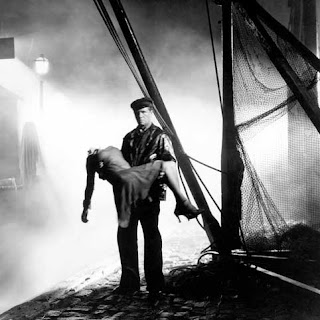TERRA EM TRANSE (Glauber Rocha; Brazil, 1967)
Quick snippets and traces of time spent looking through Rocha's eyes.
Another game of catch-up – this is only my second Rocha film, after viewing Black God, White Devil a number of years ago. My memory of that film is faint now; the story seems to have disappeared, leaving me with the impression of an intense, dazzling, sun-blinding, white that often seemed to consume the whole film, and a smacked-in-the-face feeling of seeing something out of the ordinary. Must re-visit this film soon, to play compare-and-contrast with Terra em Transe.
Lately it's seems that I'm hyper-aware of the visual inauguration of a film, of how the opening scene arrests my attention. The very start of the film is deathly quiet, a silent flight over the sea. The sea seems so unusual, so un-sea-like - tactile, still, soft and smooth. It feels like skin. We meet the coast, tracing the line where sea meets land, then head deep into the mountainous country, seemingly flying into the fictional South American country of Eldorado. Terra em Transe = Earth Entranced. Here, in the beginning, earth (and sea) are entrancing.
The film is often near-bewilderingly hallucinatory. Tumbling flashbacks and exploded chronology make for heady viewing. Point Blank, another wild ride through what feels like a time-looping narrative, was also made in 1967. Must have been something in the water.
The poet caught between switching allegiances from one political side to the other reminds me, for some odd reason, of yet another 1967 film, Miklos Jancsó's The Red and The White. Both films present distinctly different visual auras – the stark and austere choreography of Jancsó's film provides a radically different rhythm to Rocha's dancing, weaving, twirling camera. Yet I can't help feeling some strange kind of similarity inside of the constant ebb and flow of combat, a constant supplanting of one side over the other as the 'winning' side, and the pervasive feeling that both sides seem to be the same. And both films might seem to be cold, (Jancsó's film is sculpted and rigorous, Rocha's is verbose and intellectual), but are really pumping with blood, fired up with the passion of presenting the brutality of combat in a radically new format.
The ending is utterly nuts. Three minutes of the poet, Paolo, seemingly shot and in some trance-like death-throe, holding a gun and moving and gesticulating as if he is performing some kind of interpretative dance to the sound of constant gunfire. Best performance-art mime I've seen in ages.









